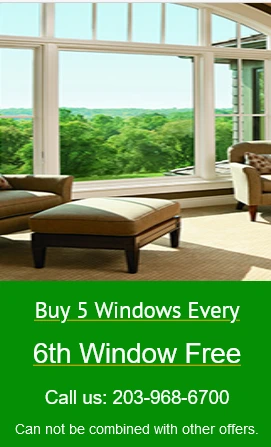Door Features
Door Features: Interior & Exterior Finishes For Doors
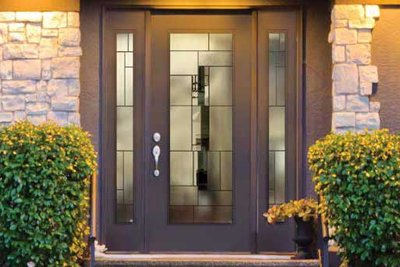
Not all houses are built the same, and each homeowner has a unique style and design vision. Window Solutions Plus knows this, and loves working with homeowners whose dreams are as big as ours. Since we don’t want to limit your ability to design and choose the right option for your home, we offer a vast array of interior and exterior finishing options – allowing you to achieve the beauty and appeal you’ve always dreamed of.
Interior
Window interiors are available in all sorts of materials – from wood and vinyl, to aluminum, composite, and fiberglass. All come in varying price ranges and all have their benefits. Here at Window Solutions Plus we believe there is no “right” or “wrong” interior material – there is only the material that is best suited for your style and budget. And we will walk you through that process and help you make the best decision for your living space.
Wood interiors come in a variety of finishes:
Wood interiors offer more design flexibility – doors can be stained or painted to match your decor.
- Bare: A bare interior will be primed and painted on site.
- Stain: A stained factory interior will also be polyurethane each manufactures has their specific colors available such as oak, walnut, cherry.
- Primed: A primed factory interior will provide the base for on site painting.
- Painted: A painted factory finish is extremely durable and will not require and further on-site maintenance each manufacturer has their specific colors available such as white, black, bronze.
Exterior
One crucial job your doors perform is keeping the moisture and air out of the wall structure that surrounds them. And the exterior finish at the edges of the door is the so-called point of impact where the unit the wall, and can, therefore, allow a leak or a draft. That is why it is important to understand what finish your new doors will come with. White is the most common color, every manufactures offers colors options.
Exterior finishes are what determine how your home looks from the street. Newly installed doors will usually require exterior trim. Exterior trims typically cover the new insulation and/or are there for decorative purposes.
Door Features: Glass
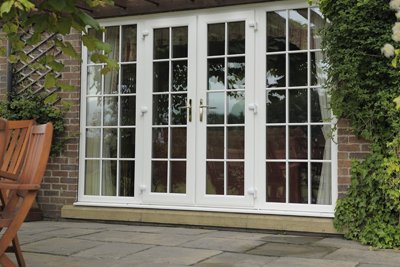
You can choose from different glass options that have been designed for different environmental conditions and home design preferences. As a homeowner, you can choose anything from clear glass to Low-E glass to obscure glass.
Keep in mind which direction your doors will face and how much sunlight or weather elements they will be exposed to. Sometimes you can get too much of a good thing — oversized doors featuring standard glass can allow too much hot sun into a home during summer months. Consider selecting doors with between-the-glass shades or blinds for enhanced privacy. Select doors featuring Low-E coatings to protect your furnishings from overexposure to the summer’s hot sun.
Glass Types and Options
Clear Glass
Completely transparent, without any color added. Clear glass is the basic material available for windowpanes. In recent years, with the advent of ever-increasing energy costs, more homeowners are choosing glass with special glazing options – like Low-E coating – to enhance energy efficiency.
Low-E Glass
Low-E keeps a home cool and comfortable by reflecting the sun’s heat and damaging rays. In the winter, Low-E glass helps a home stay warm by reflecting heat back into the room. Low-E coating is a microscopically thin finish of metal oxide on the surface of clear glass that reflects a high percentage of heat. This type of coating allows the sun’s heat and light to pass through the glass into the home, while simultaneously blocking heat from escaping the room, reducing heat loss.
Heat absorbing
Glass treated with gray, green or bronze tints reduce heat gain by absorbing as much as 45 percent of the incoming solar energy, further increasing the energy efficiency of doors.
Reflective
Glass that has been coated with a reflective film is useful for controlling solar heat gain during the summer. It also reduces the passage of light and solar transmittance year-round.
Tinted Glass
Gives the glass a consistent color throughout which will not chip or peel. The tinting also reduces glare and absorbs heat, keeping your home cooler. Colors offered usually include bronze and gray.
Obscure Glass
Textured glass that lets light through but is not completely transparent. It is most often used for privacy, light diffusion or decorative effects. Some styles include rain glass, glue chip glass, reed glass, etc.
Understanding Glass Performance
This information is provided to help you choose the best product for your home. The ENERGY STAR program uses U-Factor, Solar Heat Gain Coefficient and Air Leakage to qualify products for certification.
U-factor
Measures how well the doors prevents heat from entering or escaping the home. This represens the heat flow rate through a door, expressed BTU’s using winter weather conditions. It represent how much interior heat is retained during cold weather. The smaler the number, the better.
Solar Heat Gain Coefficient (SHGC)
Measures how much heat from the sun is blocked. Solar Heat Gain Coefficient (SHGC) is perhaps the most important indicator of how well a doors works in texas. The SHGC measures the amount of solar radiation that enters a building as heat. The lower the number, the better the glass is at preventing solar gain.
Visible Transmittance (VT)
Measures how much light comes through the whole door. Visible Transmittance (VT) is the percentage of visible light that’s transmitted through the glass and coatings. A single pane of clear glass will back 10% of visible light (without any coatin).
Air Leakage
Measures how much outside air comes into the home through a closed doors.
Fading Transmission
Fading Transmission represents the portion of energy transmitted in a spectral region from 300-700 nanometers. The region includes all of the ultraviolet energy and most of the visible spectrums of light. The lower the number, the better the glass is for reducing potential fading to carpets and furnishings.
Door Features: Grilles
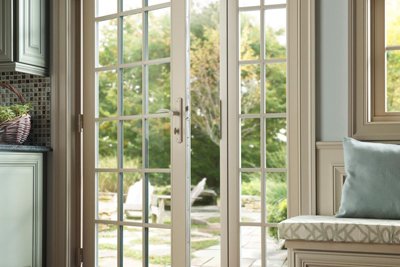
Door grids, also known as door grilles, are a popular doors option to give the appearance of individual panes of glass. Decorative grids can add warmth and style to your doors. And because internal grids are enclosed in between the two panes of glass, cleaning is fast and easy.
Grids can be considered the cherry on top of the sundae for doors in the home. Designing your home requires a good amount of creativity and meticulous planning. Even the smallest details, like the grid pattern of your doors, should complement the overall interior.
Finishes
- Exterior: Each grill option may be finished to match your exterior cladding color. ILT options also include natural Mahogany and primed Pine exterior finishes.
- Interior: Unfinished, prefinished stain or paint, and primed finish options are available for every grille style except grilles-between-the glass, which are available in seven color choices.
Tips for understanding grids and how to specify them for doors:
- Know where the grids are located.
- Consider the size of the door.
- Know your terms. Vertical grids go in an “up and down” direction on the glass of the door. Horizontal grids go “side to side” on the glass.
- Understand your grid locations. Grids are defined within the sash of a door.
- Think of the whole house. Generally, grid patterns should match in all the doors on the same floor and on the same side of the house.
- Visualize a grid.
Color Combinations
Depending on the interior and exterior finishes you choose for your doors, you’ll want to coordinate your door grids to match. For the same colors on the interior and exterior, grids are available. To create grids with different colors on the interior and exterior, grids are available. This allows you to create the perfect door inside and out.
Door Grid Patterns
 Colonial
Colonial Diamond
Diamond Victorian
Victorian Prairie
Prairie Double Prairie
Double Prairie
Door Features: Screens
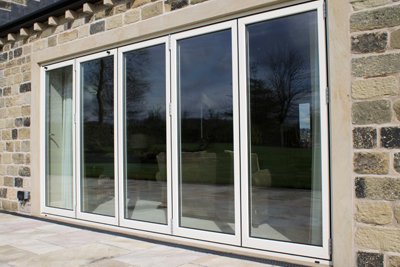
The beauty of door screens is that they cover the opening of a door while allowing in fresh air and light. Today’s screens come in a variety of types and styles that serve different functions, depending on your needs.
Door screens are designed to let fresh air in and keep most everything else out. Most screens are placed on the exterior of your home, so that you can open and close the door from the inside. Only casement and awning doors have the screen on the interior side, so that the door can be cranked open for ventilation.
Best Feature of a Door Screen?
- More light to enter your home
- Greater airflow for better ventilation
- Increased optical clarity for clearer views
Select a Screen Type
- Aluminum: Durable, long-lasting, for all screen projects, in bright or charcoal finish.
- Fiberglass: Easy to install, for all screen projects, in gray or charcoal finish.
- Clear Advantage: Greater visibility and airflow than standard screen, least noticeable, greatest curb appeal.
- Pool and Patio: Stronger fiberglass screening for larger openings like porches.
Frame Color Options
There are a wide variety of frame colors available. Depending on the product you choose to have installed, ask technician which options are available to best fit your needs.
- 1
- 2
- 3
- 4
- 5
- 6
Our Difference

Design and Installed
Each screen is designed to your home for a perfect fit every time. Our technicians fabricate each screen individually, usually in one trip.

Certified Installers
Every technician comes with years of experience dealing with screens, backed by training from a nationally recognized leader in the industry.

Guarantee
We’re proud of our work and want you to be proud to show it off. That’s why we will do what it takes to ensure your satisfaction.
Door Features: Hardware
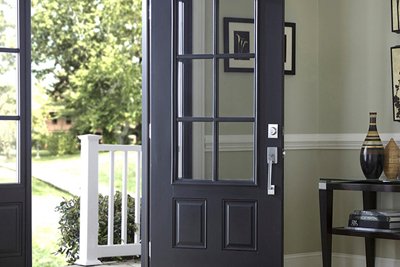
Door hardware serves several purposes: 1) opening and closing your door; 2) providing a locking mechanism to give you a measure of security; and 3) added aesthetics to your doors and a complement to other design elements within the home.
Door hardware is a small part of a room’s overall design and feel, but it can make a large impact. Choosing the finish for your home’s hardware, including doors hardware, might feel like a daunting task, but when done right it can transform a look from plain to beautiful.
Window Hardware and Finishes
Doors offers several distinctive hardware finishes that allow designers and homeowners to create mood and match decor. What does your hardware say about you? Find out below.
Door Hardware Color Options
Door Features: Specialty Features
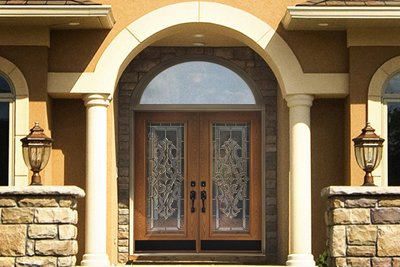
Interior or exterior, with or without glass, gliding or hinged, natural or man made material – Special shape doors come in a variety of shapes and styles.
Distinctive shapes can add elegance to a home, especially when placed above other doors. From octagons to ellipses to gothic arches, Doors can build almost any shape you can dream up. Unique grid patterns can also be added to create a truly one of a kind door.
Specialty Door Features
- Double glazed sealed units with Intercept spacer for optimum insulation value.
- Low emissivity (Low E) glass that provides maximum energy efficiency.
- Argon gas for optimum efficiency.
- Fusion welded frame and sash corners.
- Door has hidden drainage holes to allow water to be drained without you seeing drain flaps.
Options
- Design flexibility.
- Adds architectural interest.
- Can be used to highlight an interesting feature of your home.
- Used alone or in combination with other doors.
- Painted exterior.
- Decorative grids that are sealed inside the insul unit.
- Various tinted and textured glass available.
What makes us the best place to buy your windows and doors?
-
COMPETITIVE PRICING
Our prices are low all year round. And with a range of finance options across the whole project, your dream windows and doors are closer than you think.
-
WARRANTY
Our windows and doors all carry lifetime warranties for their core components, plus a warranty of at least ten years on glass seal failures.
-
CERTIFIED INSTALLERS
With a best team of specialists, from design to fitting, we are here to help make your dream windows and doors a reality.
